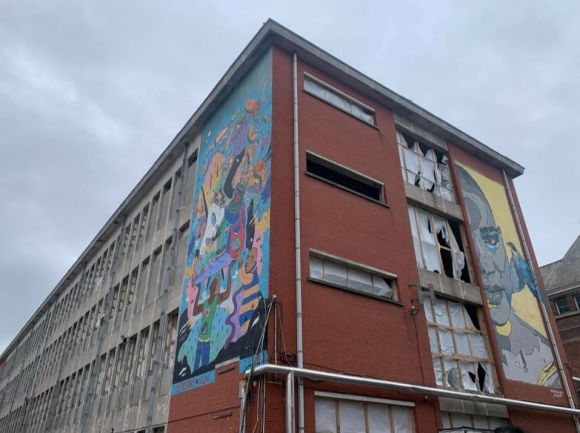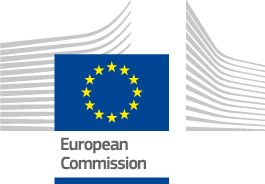
Building awaiting to be refurbished covered by Graffiti Art. Picture: Marianne Graff.
Upon entering the former National Gendarmerie Barracks, the vibrations of the metro can be felt through the halls of various buildings. Well connected, in the heart of Ixelles, the Usquare.brussels project aims to create a sustainable urban environment, fostering inclusivity – noticeable within the first minutes of being in the building, once you spot their unisex bathrooms.
Acquired by the Brussels-Capital Region in 2018, the four-hectare former barracks are situated near the campuses of two major universities in the city, the Free University of Brussels (VUB) and Université Libre de Bruxelles (ULB) campuses. It thus felt natural for Brussels to redevelop this space for educational purposes once an ERDF fund had been allocated. The project emphasises collaboration between the VUB and ULB, marking their first joint initiative in over fifty years. As the project unfolded, it felt right to go beyond education, letting the way for public spaces to develop: this will include affordable housing, commercial spaces accessible beyond residents, and research centres such as labs and an autism centre.
This space thus highlights a shift from an enclosed State space, to the integration of community and citizenship, blending into the surrounding landscape.
At the core of the project is sustainability: “not destroying, dismantling” is the mantra which project developer Benjamin Wayens has seemed to follow, allowing for materials like bricks and timber to be reused. Eco-friendly features include geothermal heating systems, the use of mussel shells and the integration of empty green spaces.
While the project is set to fully develop by 2035, current empty spaces have been filled by rotating temporary occupants since 2019, developing all types of initiatives that foster art, community building, and synergy within businesses. These low-rent spaces with high demand have allowed for a cooperative supermarket to flourish, alongside a curious mushroom lab business. A happy cultivator in a hazmat suit proudly tells us their company started by providing mushrooms to Michelin star restaurants, while they now serve communities, students, food halls and more. This proud move toward serving the public sector serves as an example of what the project Usquare has been striving for.
While knowing their occupation is only temporary, with leases being up to two years, it is imperative to question the future of these startups and artists once they are displaced. While they do have the opportunity to grow throughout their occupation, there is no plan of permanent integration into the project for them. Are they really supported for long-term survival, once they are forced to leave the space?
Questions of gentrification are naturally brought up when neighbourhoods such as Usquare develop. As this project strives to be attractive for many, how will it affect its surroundings? It is relevant to highlight that the tour guide and his translator jokingly talk about destroying an outdated building behind the barracks. This underlying tension may inadvertently contribute to an altering of the landscape and rising rents in the surrounding area—a classic precursor to gentrification despite best efforts.
As Usquare.brussels aims to create a sustainable and inclusive urban environment, careful consideration must be given to how it impacts existing communities, both temporary occupants and surrounding areas. Ultimately, while Usquare.brussels is on a steady road to success, its ability to foster genuine community engagement within and outside the centre will make or break the cohesion within the space.
By Marianne Graff



